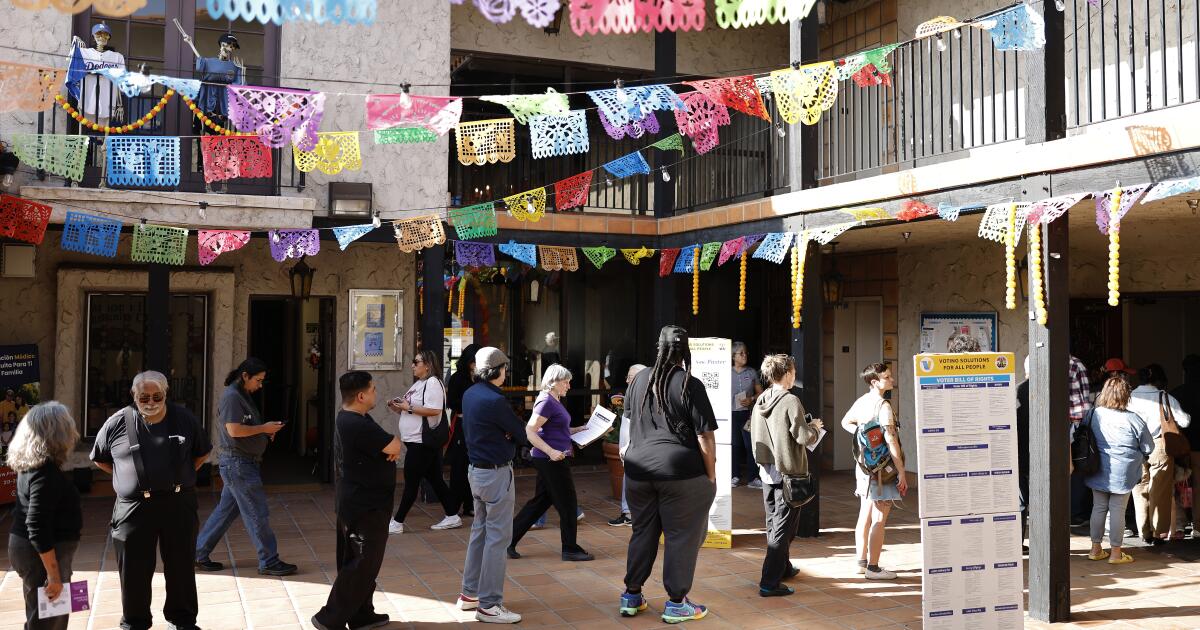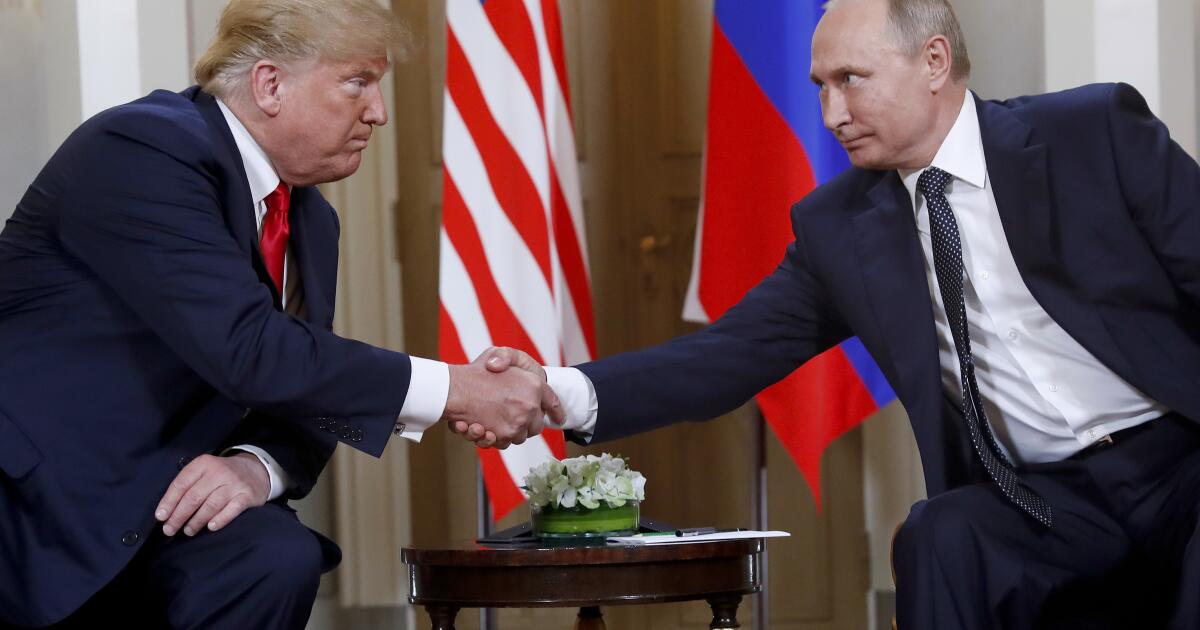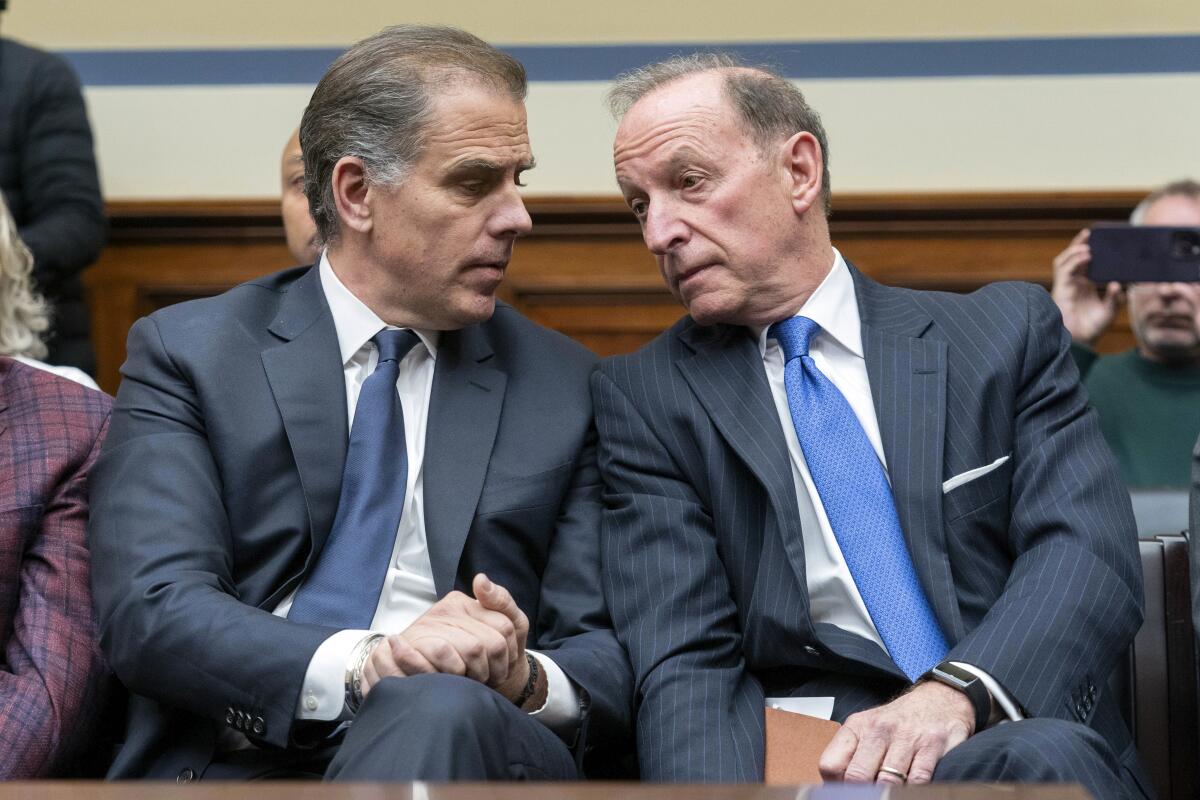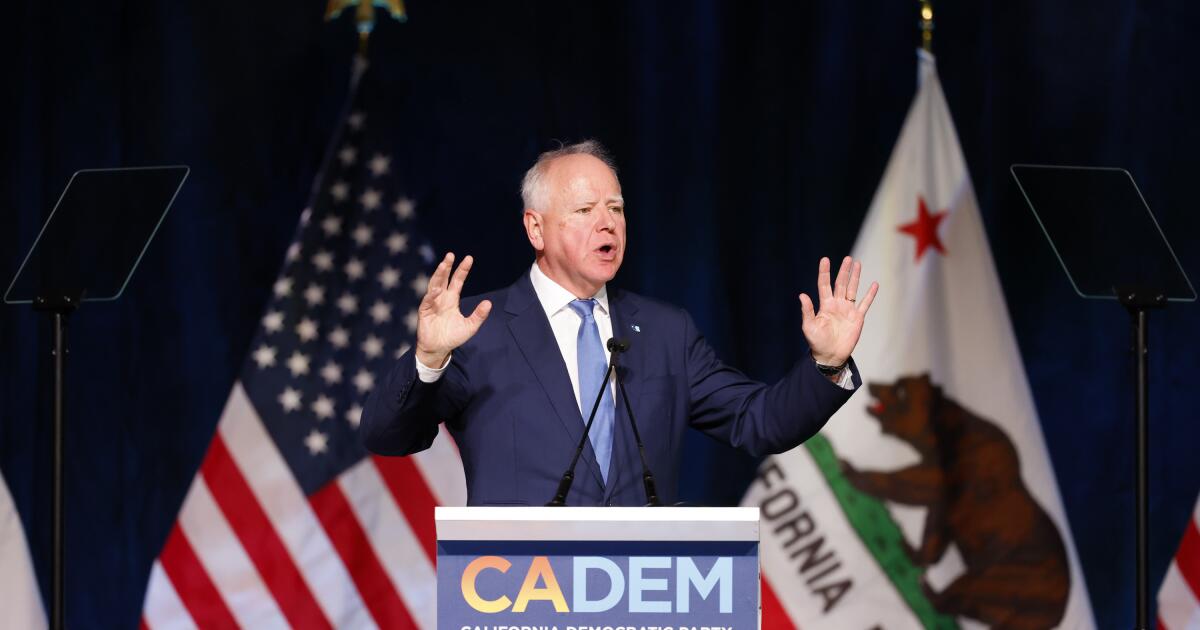Contributor: I’m a young Latino voter. Neither party has figured us out
On Tuesday, I voted for the first time. Not for a president, not in a midterm, but in the California special election to counter Texas Republicans’ gerrymandering efforts. What makes this dynamic particularly fascinating is that both parties are betting on the same demographic — Latino voters.
For years, pundits assumed Latinos were a lock for Democrats. President Obama’s 44-point lead with these voters in 2012 cemented the narrative: “Shifting demographics” (shorthand for more nonwhite voters) would doom Republicans.
But 2016, and especially the 2024 elections, shattered that idea. A year ago, Trump lost the Latino vote by just 3 points, down from 25 in 2020, according to Pew. Trump carried 14 of the 18 Texas counties within 20 miles of the border, a majority-Latino region. The shift was so significant that Texas Republicans, under Trump’s direction, are redrawing congressional districts to suppress Democratic representation, betting big that Republican gains made with Latinos can clinch the midterms in November 2026.
To counter Republican gerrymanders in Texas, Gov. Gavin Newsom and California Democrats pushed their own redistricting plans, hoping to send more Democrats to the House. They too are banking on Latino support — but that’s not a sure bet.
Imperial County offers a cautionary tale. This border district is 86% Latino, among the poorest in California, and has long been politically overlooked. It was considered reliably blue for decades; since 1994, it had backed every Democratic presidential candidate until 2024, when Trump narrowly won the district.
Determined to understand the recent shift, during summer break I traveled in Imperial County, interviewing local officials in El Centro, Calexico and other towns. Their insights revealed that the 2024 results weren’t just about immigration or ideology; they were about leadership, values and, above all, economics.
“It was crazy. It was a surprise,” Imperial County Registrar of Voters Linsey Dale told me. She pointed out that the assembly seat that represents much of Imperial County and part of Riverside County flipped to Republican.
Several interviewees cited voters’ frustration with President Biden’s age and Kamala Harris’ lack of visibility. In a climate of nostalgia politics, many Latino voters apparently longed for what they saw as the relative stability of the pre-pandemic Trump years.
Older Latinos, in particular, were attracted to the GOP’s rhetoric around family and tradition. But when asked about the top driver of votes, the deputy county executive officer, Rebecca Terrazas-Baxter, told me: “It wasn’t immigration. It was the economic hardship and inflation.”
Republicans winning over voters on issues such as cost of living, particularly coming out of pandemic-era recession, makes sense, but I am skeptical of the notion that Latino voters are fully realigning themselves into a slate of conservative positions.
Imperial voters consistently back progressive economic policies at the ballot box and hold a favorable view of local government programs that deliver tangible help such as homebuyer assistance, housing rehabilitation and expanded healthcare access. In the past, even when they have supported Democratic presidential candidates, they have voted for conservative ballot measures and Republican candidates down the ticket. Imperial voters backed Obama by a wide margin but also supported California’s Proposition 8, banning same-sex marriage. This mix of progressive economics and conservative values is why Republican political consultant Mike Madrid describes Latino partisanship as a “weak anchor.”
The same fluidity explains why many Latinos who rallied behind Sen. Bernie Sanders in 2020 later voted for Trump in 2024. Both men ran as populists, promising to challenge the establishment and deliver economic revival. For Latinos, it wasn’t about left or right; it was about surviving.
The lesson for both parties in California, Texas and everywhere is that no matter how lines are drawn, no district should be considered “safe” without serious engagement.
It should go without saying, Latino voters are not a monolith. They split tickets and vote pragmatically based on lived economic realities. Latinos are the youngest and fastest-growing demographic in the U.S., with a median age of 30. Twenty-five percent of Gen Z Americans are Latino, myself among them. We are the most consequential swing voters of the next generation.
As I assume many other young Latino voters do, I approached my first time at the ballot box with ambivalence. I’ve long awaited my turn to participate in the American democratic process, but I could never have expected that my first time would be to stop a plot to undermine it. And yet, I feel hope.
The 2024 election made it clear to both parties that Latinos are not to be taken for granted. Latino voters are American democracy’s wild card — young, dynamic and fiercely pragmatic. They embody what democracy should be: fluid, responsive and rooted in lived experience. They don’t swear loyalty to red or blue; they back whoever they think will deliver. The fastest-growing voting bloc in America is up for grabs.
Francesca Moreno is a high school senior at Marlborough School in Los Angeles, researching Latino voting behavior under the guidance of political strategist Mike Madrid.




